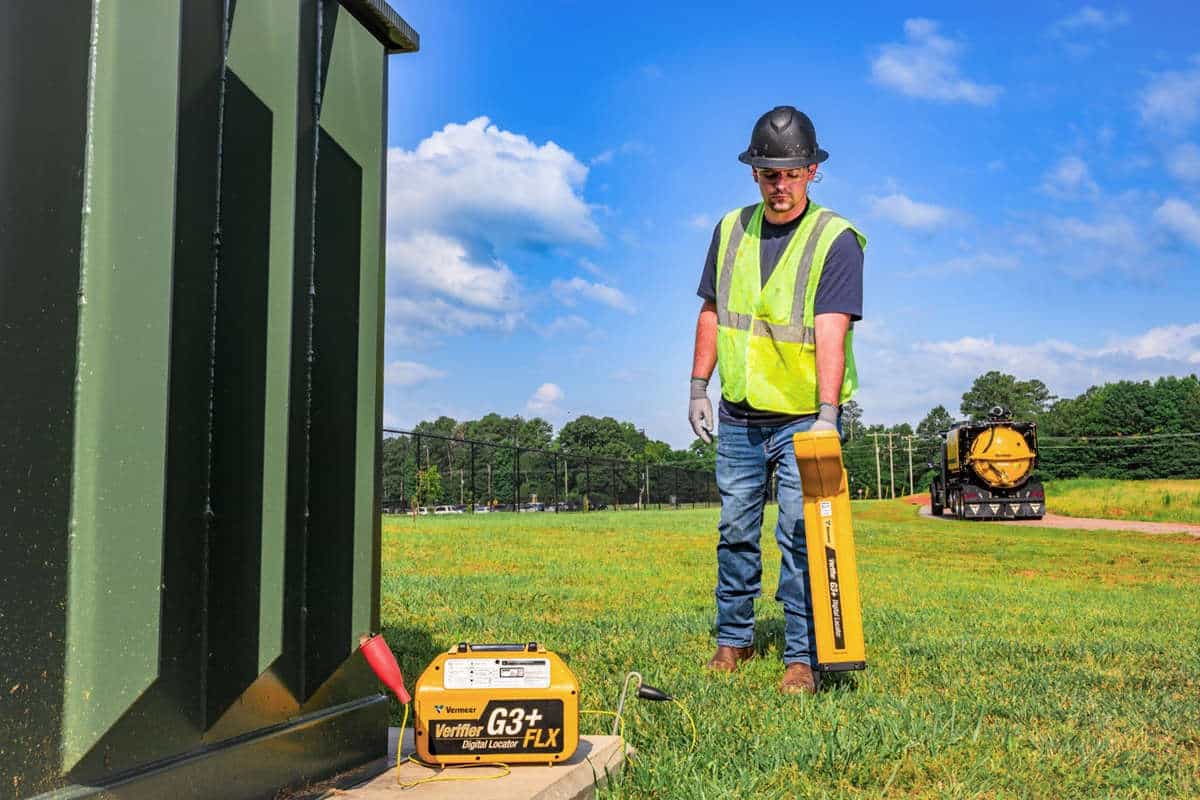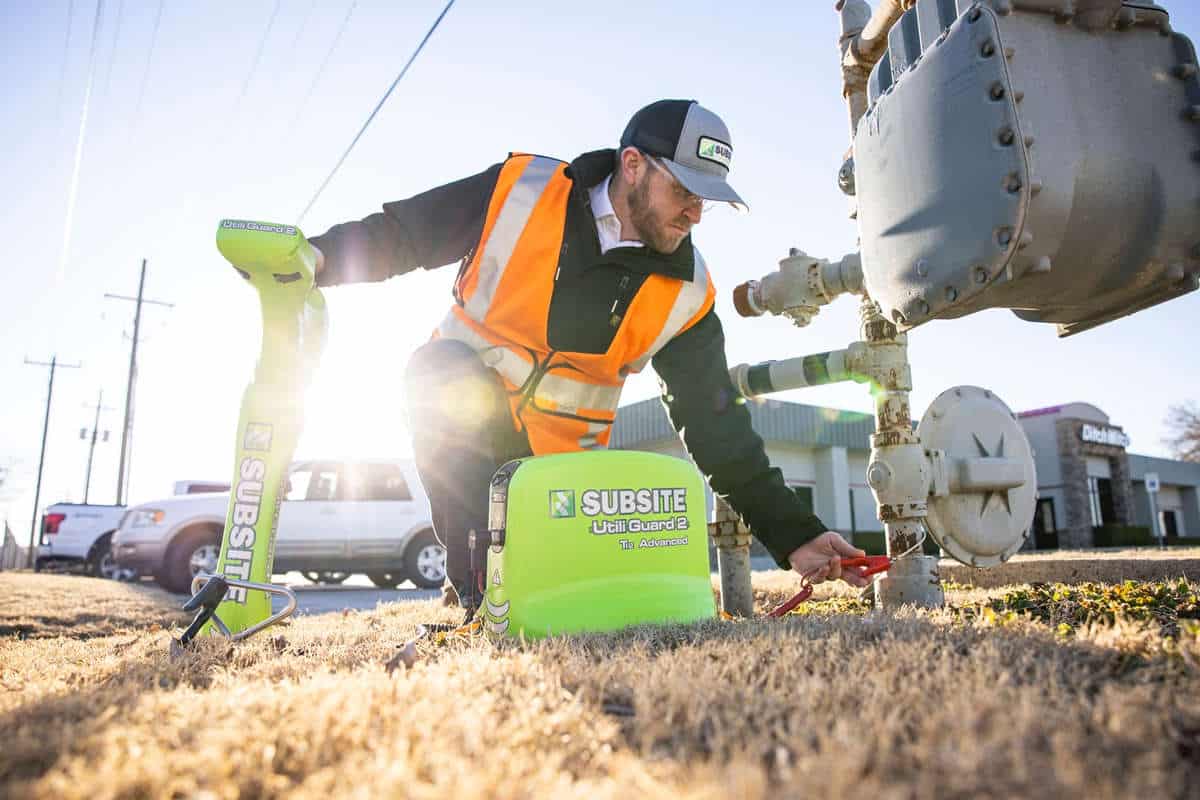Utility Locating Tools Help Eliminate the Risk of Striking Underground Lines
In January, a Texas DOT contractor punched a hole in a 30-in. diameter pipeline that carries 400,000 gal of crude oil a day to refineries near the Gulf. Crude oil spewed into the air — and oil prices shot higher when supply was interrupted.
How could this happen? After all, in 2005, the FCC mandated that everyone should call 8-1-1 before digging to make sure no underground utility lines or pipes are in the path of a planned excavation. Apparently, having the law on the books isn’t enough.
“One of the main things that we always include in our presentations and materials is to get in those tickets [8-1-1 requests for digging clearance] before you begin to excavate,” says Cody Mecham, regional sales manager for McLaughlin. The counsel comes during purchases of utility locators. “Every excavation contractor should have a locator, in my opinion. But having a locator doesn’t eliminate the need to call 8-1-1. It’s the law.”
It also is common sense in 2017 to know what lies below the surface of the ground before digging into it. A clutter of subterranean utility lines is a feature of our times. Anyone digging a hole for a backyard privy in 1817 ran little risk of hitting a line or pipe. Today is another story: Some 19 million miles of buried utility lines are underfoot, and more miles are being added daily.
Yet busy contractors chafe when they have to wait around for an 8-1-1 technician to show up and clear them for digging. Waiting around is not the same as making money. Matt Lumbers, product manager for Subsite, acknowledges that problem. He also believes contractors should take the initiative to verify the information they are given by 8-1-1 technicians.
“Sometimes the marks on the ground may not be on target. It depends on a technician and how well he knows how to do his job,” Lumbers says. “We encourage contractors to take the time to look around the area and visually verify the marks on the ground. They should do that on every job.”
In other words, because people are human — that is, making mistakes or becoming impatient — contractors should take the time to trust but verify, as a former president used to say. “Only a certain percentage of people who do excavation work actually call 8-1-1,” concedes Eric Huber, RIDGID’s senior new product development manager for diagnostics. “But we find that more and more individuals are buying these locators to do some of their own locating and also to double-check what 8-1-1 is doing.”
Electromagnetic utility locators work best when a transmitter is clamped on a utility line. A selected frequency is sent through the line and figuratively produces a shout-out of “Here I am!” to a handheld locator properly operated at ground level. Keeping dead-on that signal and clearly marking its path gives an excavator all he needs to know to avoid damaging the line or pipe.

Manufacturers have solutions to these problems. In fact, each brand commonly offers several transmitter and receiver solutions for different situations. Some receivers — like the McLaughlin Vision FLX — hear a general range of frequencies, but are particularly adept at sorting out and tracing buried cable. “It is a very specialized unit,” says Mecham of the FLX, with a common application being location of underground lines for street lights.
Other receivers — like the RIDGID SR24 — are GPS and Bluetooth-enabled so they not only can locate a line, they can digitally map it for future reference. “Six months after a location job, the flags are long gone,” says Huber, “but a digital map will still be on record.” And some receivers — like the Subsite 2550GR — are not electro-magnetic units at all. They are ground penetrating radar systems that can find otherwise difficult-to-locate lines, such as clay pipe without a tracer line or fiber. “If a contractor can find that fiber line one time, the unit has paid for itself,” says Lumbers. “Because if that line is hit, it will be very expensive to repair.”
Handheld receivers and separate transmitters come in bright colors — which might only be important for locating a tool set down in high grass — but also with varying strengths and weaknesses. For example, contractors considering one tool or another might lean toward a locator device with a significant warranty, such as McLaughlin’s three-year warranty that includes protection against water damage. Or RIDGID’s patented omnidirectional antennas may be the key feature looked for in a device. Or battery life could be the deal-breaker and Subsite’s 100 hours of life on transmitters and 30 hours on receivers might make the choice easy.
Lumbers outlines what he believes is the proper contractor approach to ensure that a dig will not disrupt something unseen in the ground. It starts with a visual inspection, that is, a look-around for manhole covers, utility markers, wire running down a pole. “That is going to give me a pretty good idea what is in the ground,” he says. Next, he would roughly determine the path of a planned excavation and call 8-1-1 with that information in hand. Finally, following the visit by an 8-1-1 locating technician, he would drag out his own locator and probes to verify the marks on the ground.
A preliminary walk-around on a site might be done using a receiver as a passive tool, which is generally OK for getting a rough approximation of what’s below. “We always try to impress upon our customers that it is alright to passively locate at first, but that that is a rougher estimate,” Mecham says. “If you really want a true depth for a line, then put a transmitted frequency on the line and do your locating on that.”
PVC pipe was a handy innovation, but pipelayers bedevil locators when they bury it. Any nonmetallic pipe, including clay, is more unreadable from ground level than its metal counterparts unless a tracer wire is laid along it. Other tricky subterranean targets include fiber lines — Mecham says “receivers either locate them very well or very poorly” — as well as power lines for street lights and utilities running through problematic soils.
In every case, an operator is looking for a “nice round” signal and hoping not to lose it. It is delicate work, which is why operators typically are trained for weeks before being entrusted to find lines on their own. The excavation industry is hoping that continual training of locator operators and ongoing advances in technology will stay ahead of the growing need for them.
“This world evolves and the more we put in the ground, the more problems we are going to have locating them,” says Lumbers. “We need to keep our ear to the ground to understand all the issues.”
Giles Lambertson is a freelance writer for Utility Contractor.
Check out more utility locating articles here. Tags: April 2017 Print Issue, McLaughlin Underground, Utility Locating




